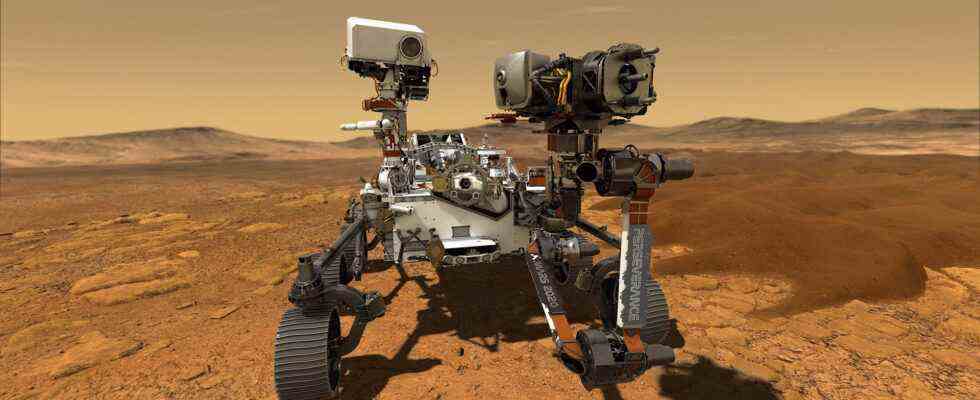Status: 02/18/2022 11:28 a.m
The Perseverance rover has been exploring Mars for a year. The robot had to overcome several hurdles, but NASA is sticking to its goal: the search for past life should continue in the next few years.
“Perseverance has landed.” Rocks fell from the souls of the NASA engineers in the control center. Almost seven months on the way to Mars, flown 480 million kilometers. Then it was the seven minutes of hell that mattered. That was the question exactly a year ago: Would the rover arrive safely on the surface of Mars? Would he be able to begin his great task? The short answer to that is yes.
rock and soil samples
“He’s looking for evidence of earlier life of microbes. For this purpose, rock and soil samples are taken, which are later brought back to Earth,” explains project manager Lori Glaze. To do this, the rover drills into the Martian soil with the robotic arm and packs the drill core into small tubes.
And after a few weeks, says Jessica Samuel, who is in charge of this part of the mission, they saw it for the first time. “We could look through the tube at the sample while it was still in the drill, and it was clear then that it was a success.” Just as “Perseverance” drives undeterred, already around three kilometers in total.
Next destination is a river delta
Not everything went smoothly. The first samples were too soft and crumbled, and finally pebbles had caught and blocked the drill. Somehow we managed to tilt the rover, which is the size of a small car, and shake it so that everything is fine again.
“We’ve studied the Jezero crater, now we’re looking forward to the delta,” says Samuel. “Perseverance” landed in the crater because there used to be a lake several billion years ago and took six samples. The next destination now is the river delta that once fed this lake. It is there that one hopes to find the most interesting specimens, because life needs water and the ancient mud may have petrified it.
50 gigabytes of images
“The hope is that eventually we can bring a sample of Mars back to Earth,” says NASA Director of Science Thomas Zurbuchen. The spaceship for this has yet to be built. But the present is exciting enough.
There is the “Ingenuity” helicopter, which actually flies in the thin atmosphere of Mars and supports the rover with its cameras. He was supposed to fly for a month, now he has taken to the air 19 times in a year, flown almost four kilometers and keeps recharging his batteries.
More than 100,000 images and 50 gigabytes of collected data were sent to Earth. The rover was able to extract 50 grams of oxygen from the Martian atmosphere. The mission is designed for two years, but its predecessor “Opportunity” lasted 14 years. NASA hopes for such a period again.
One year after the landing of the Mars rover Perseverance
Arthur Landwehr, ARD Washington, 2/18/2022 10:31 a.m

